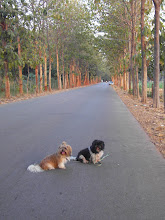

By: Mr. Nanthapong Sukthawee and Miss Ratinard Chunnirun
Thai Wai is the most attractive respect of Thailand, It has been practicing for many years. It’s the symbol of Thai greeting when young people meet olders, they will do this to respect them. Moreover Thai Wai is used in Buddhism, for example to respect the image of Buddha, to celebrate in the religious ceremony. And neighboring countries, Laos, Cambodia or India have this greeting like this, too. But Thai Wai has a more prominent point with the gentle action to show respect to other people.

How to Wai properly
The most important thing when Wai somebody is that the waier must Wai from their whole hearts. In other words, the waier should sincerely pay respect to the Wai receiver both mentally and physically.
There is more than one Wai like for monks and for the kind and royal family but do not think about that too much. Just relax and a normal Wai will do fine. The higher you have your hands the more respect you show the other person.
How to wai
Thai Wai is easy to do, everybody can do it by pressing your palms together near your chest and bowing
But there are many kinds of Thai Wai, depending on the social status, power, age, and prestige of a person/people who receive the Wai. There are three major groups of people of higher status in the traditional Thai society.
1. Monks/priests/royal family
To wai people in this category, bow one’s head and raise one’s hands until the thumbs touch the forehead.
2. Teachers/parents
To wai these people, do the same for monk, priests and royal family. However, the finger must touch the nose. This is similar to a culture in which people raise their fingers to touch their nose when paying respect to parents and touch their mouths when paying respect to the teacher.
3. Ordinary people/acquaintances with older age.
To wai someone who is older, simply raise the pressed palms to the lips/mouth.
For all these three types, keep your hands and elbows close to the body.

Why Thai wai is important
Try to think if you are greeting with each others, absolutely you don’t want to touch their hand, especially you are a woman doing this to a man. So it’s a good idea to learn how to wai and I can confirm you that if you wai to each others and smile, you will get a good reflection from them and may be you can continue a good relationship, too.
When will you wai to another people.
It depends on the relation to the another person. The person of higher social status will be wai too. You have only a few seconds to size up someone you meet and determine this, but it's the best way to do on the side of wai first if you are unsure. It’s good manner to respect person although you don’t know him or her. It’s proper to wai If someone is older than you, you will wai them unless they are someone whom you employ like housekeeper.You will also wai when you receive a gift from the adults. But you may not wai to anyone who you are paying for service like waiters, tailors, vendors, shopkeepers or taxi drivers. In the party or other such gathering, you should wai everyone, as this is the polite way to excuse yourself from the festivities.






.jpeg)
.jpeg)




















